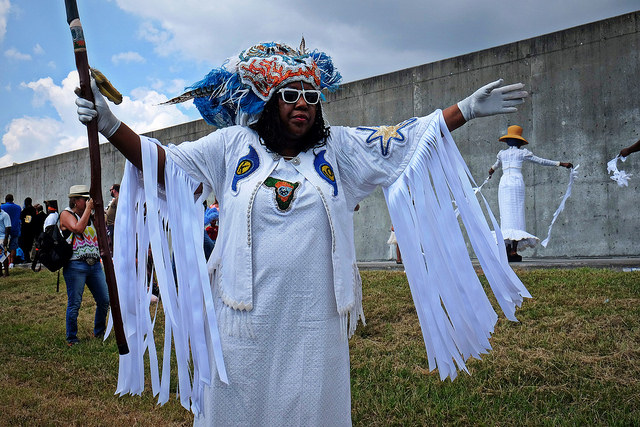
All photos: Laura Borealis
New Orleans observed the 10-year anniversary of Hurricane Katrina with a cacophony of sights, sounds and emotions that blurred the lines between art and politics, truth and contradiction, and life and death. While elected officials and the mainstream media focused heavily on the city’s “resilience,” activists on the ground were organizing around a different theme: resistance. In the lead up to the anniversary, racial justice groups held a summit and launched a website, www.katrinatruth.org, to remind the powers that be in Louisiana – and the rest of the country – that the city’s recovery efforts have mostly benefited white residents and prioritized private profit over people. Then came the second line parades. This is what resistance looks like in New Orleans.
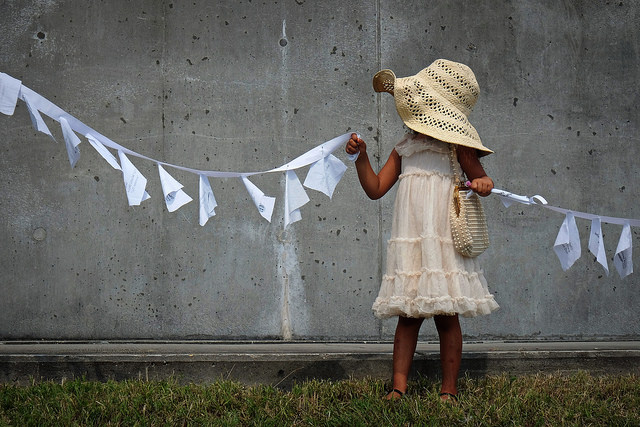
A girl prepares to perform with Black feminist artists in front of the levee wall in the Lower Ninth Ward during the memorial second line on August 29. The second line began where the levee wall failed during Katrina, releasing a torrent of water that left the historically Black neighborhood in ruins.

Performers with ECOHYBRIDITY, a collaboration of Black feminist artists who held a roaming “visual black opera” on the Katrina anniversary, perform at the levee wall during the second line. Many people who lived in the Lower Ninth War before Katrina have still not returned to their homes.
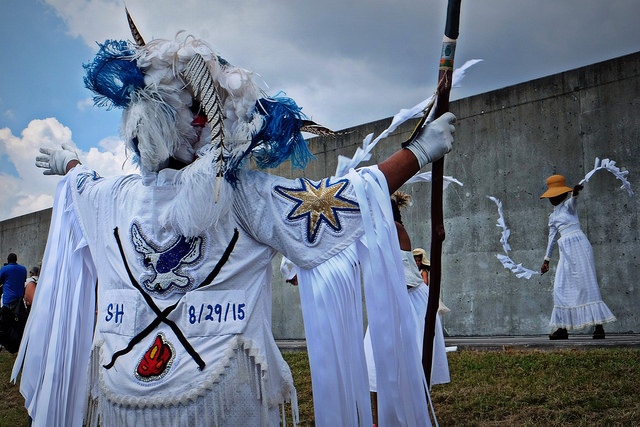
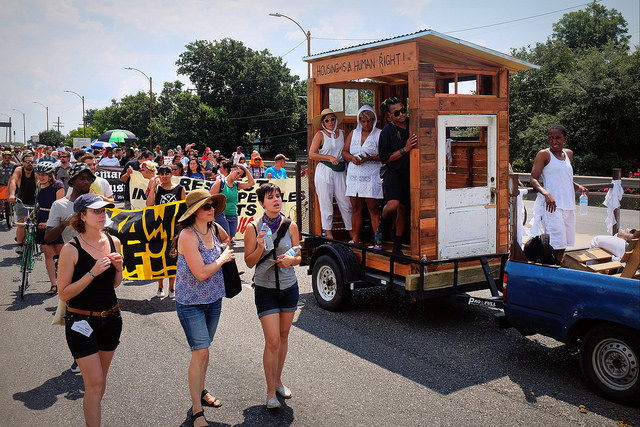
ECOHYBRIDITY constructed a mock house as a float that reads, “Housing is a human right.” Before Katrina, there were 12,270 public housing units available in New Orleans, and now there are only 2,006. More than 90 percent of the nearly 15,000 families currently on waiting lists for either public housing or Section 8 assistance are Black families, according to KatrinaTruth.org.
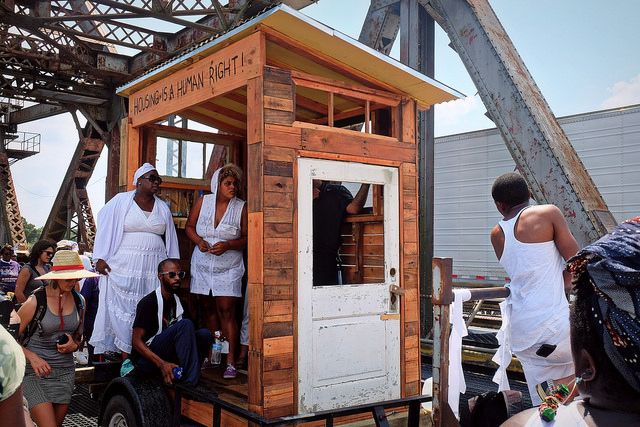
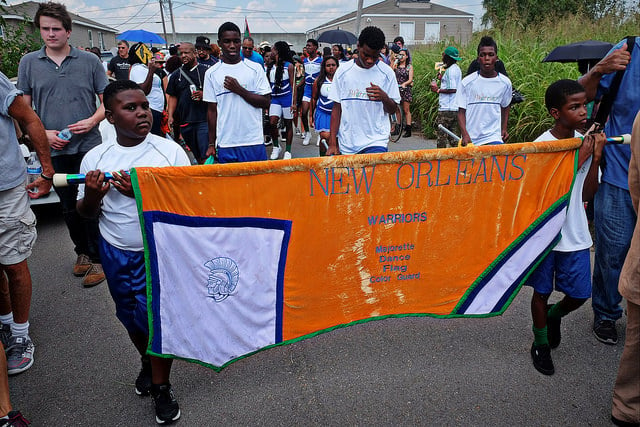
Youth march in the second line parade. At least 50 percent of Black children in New Orleans live in poverty, more than before Katrina.
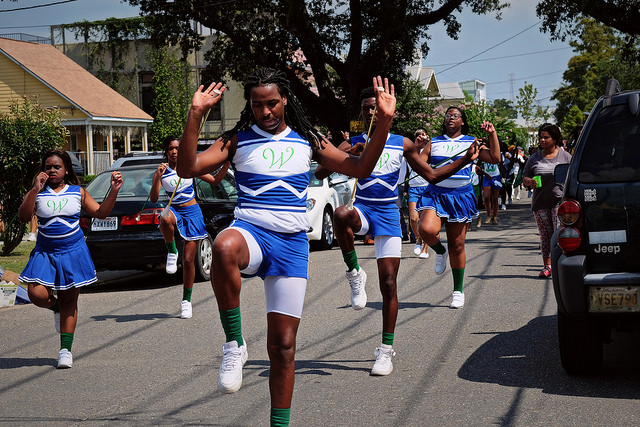
The Warriors, a youth dance crew and color guard, march in the second line parade. Many New Orleans schools were privatized after Katrina, and now 92 percent of students attend private charter schools. Advocates say harsh discipline polices at charter schools deny students equal access to education, and 15 charter schools in New Orleans have higher suspension rates the rest of the nation. In 2013, there were 46,625 out-of-school suspensions, more than the total number of students in the local school system.
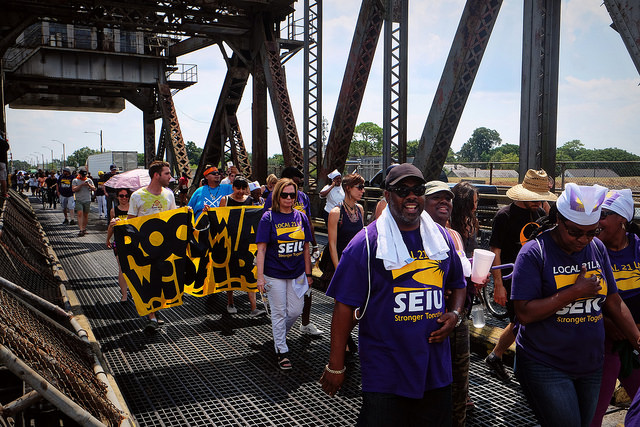
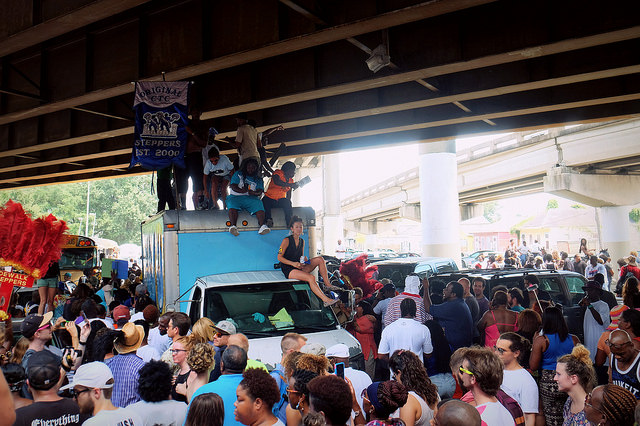
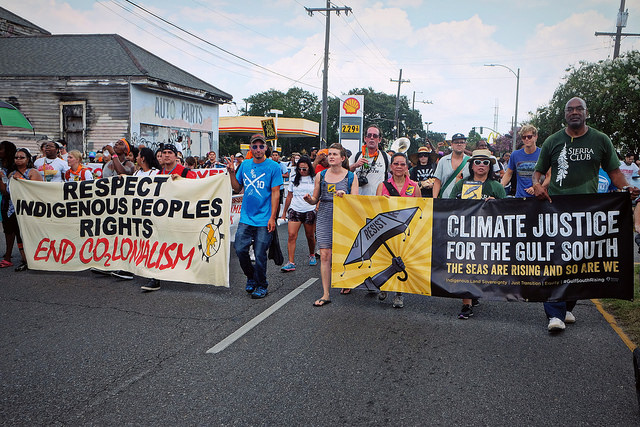
The Katrina memorial second line was more political than most second lines, as activists from New Orleans and across the country joined the parade.
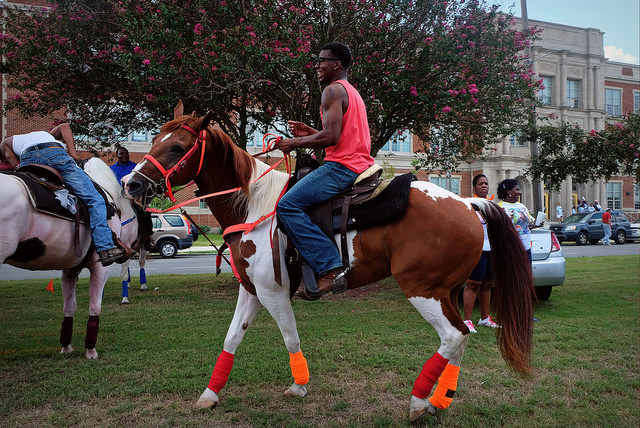
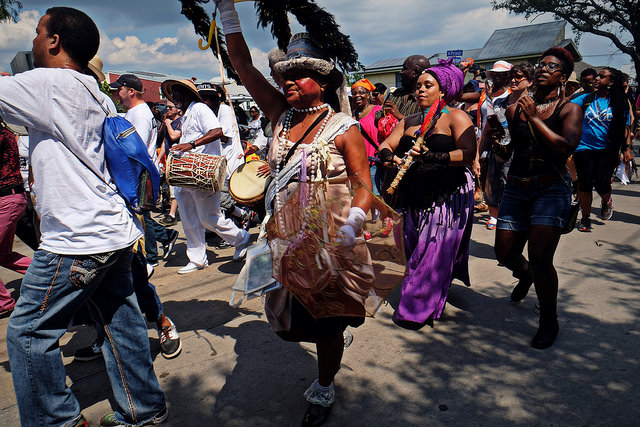
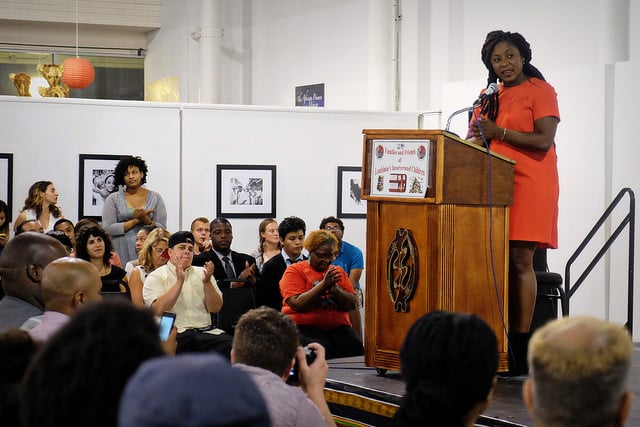
Alicia Garza, a founder of the Black Lives Matter movement, speaks at a racial justice summit held in New Orleans shortly before the Katrina anniversary.
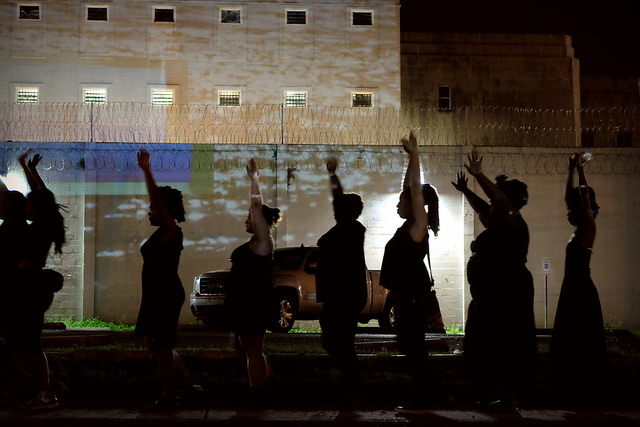
ECOHYBRIDITY performers march into position as prison resistance video is projected across the walls of the Orleans Parish Prison, the jail in New Orleans that became infamous for human rights abuses after Katrina. Jail officials have been tussling with the local government and the Justice Department over reforms ever since. There are five times as many Black inmates than white inmates in Louisiana prisons. The state’s white population is double that of the Black population. “I hope they can hear us,” an organizer said before raising a fist toward the jail.
Join us in defending the truth before it’s too late
The future of independent journalism is uncertain, and the consequences of losing it are too grave to ignore. To ensure Truthout remains safe, strong, and free, we need to raise $46,000 in the next 7 days. Every dollar raised goes directly toward the costs of producing news you can trust.
Please give what you can — because by supporting us with a tax-deductible donation, you’re not just preserving a source of news, you’re helping to safeguard what’s left of our democracy.